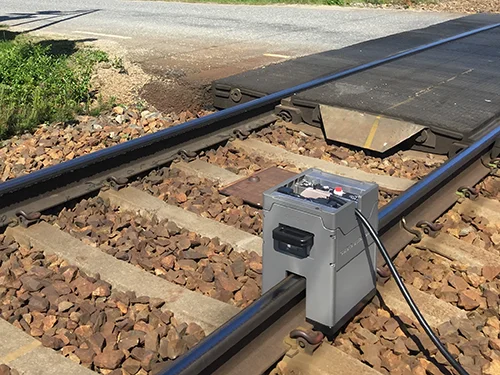Studios
-
Support
-
Contact us
-
Products
Studios
Subsea Screening Rings
With the experience gained from many inspections in both the North Sea and the Gulf of Mexico, GUL’s Sub-Sea GWT equipment has evolved into a reliable modular system. GUL Sub-Sea rings are easily adjusted to fit different pipe sizes and are available for both ROV or diver deployment.
The advantages of using the Sub-Sea rings include:
A Subsea G4mini is mounted on the ROV. A hydraulic connection is used for opening and closing the ring. The test is carried out from the ROV control room
The test is controlled via an umbilical from a topside interface box to the Wavemaker instrument. The rings are installed on a clean section of pipe by 1 or 2 divers using a mechanical clamping mechanism.
G-scan Rail Inspection
First developed in 2005 with the assistance of Network Rail, the G-Scan rail instrument sends guided waves down the length of a rail to look for any areas of cross section change. The guided waves that are created in the rail are able to detect cracks and corrosion in any section of the rail, including the ‘foot’ and ‘toe’.
Because of this ability to detect corrosion areas that are normally hidden from higher frequency methods that access the rail from the head, the G-Scan system is often used to inspect level crossings that are susceptible to foot corrosion, but are difficult to inspect without disrupting both rail and road traffic. Guided wave inspection performed from outside of the level crossing can inspect the section while the road is still fully operational; rail traffic is often not disturbed if the period between trains is long enough. The results allow you to rank the crossings, extending the mandatory lifting time for some crossings, prioritising replacement for others.

The current generation of the G-Scan uses the Wavemaker® G4 electronics and the WavePro software to collect, analyse, and report the guided wave data.
Standard sizes for the G-Scan unit are CEN50, CEN54, CEN56, and CEN60, although specials can be produced for a variety of rail sizes ranging from 36 kg/m to 61 kg/m.